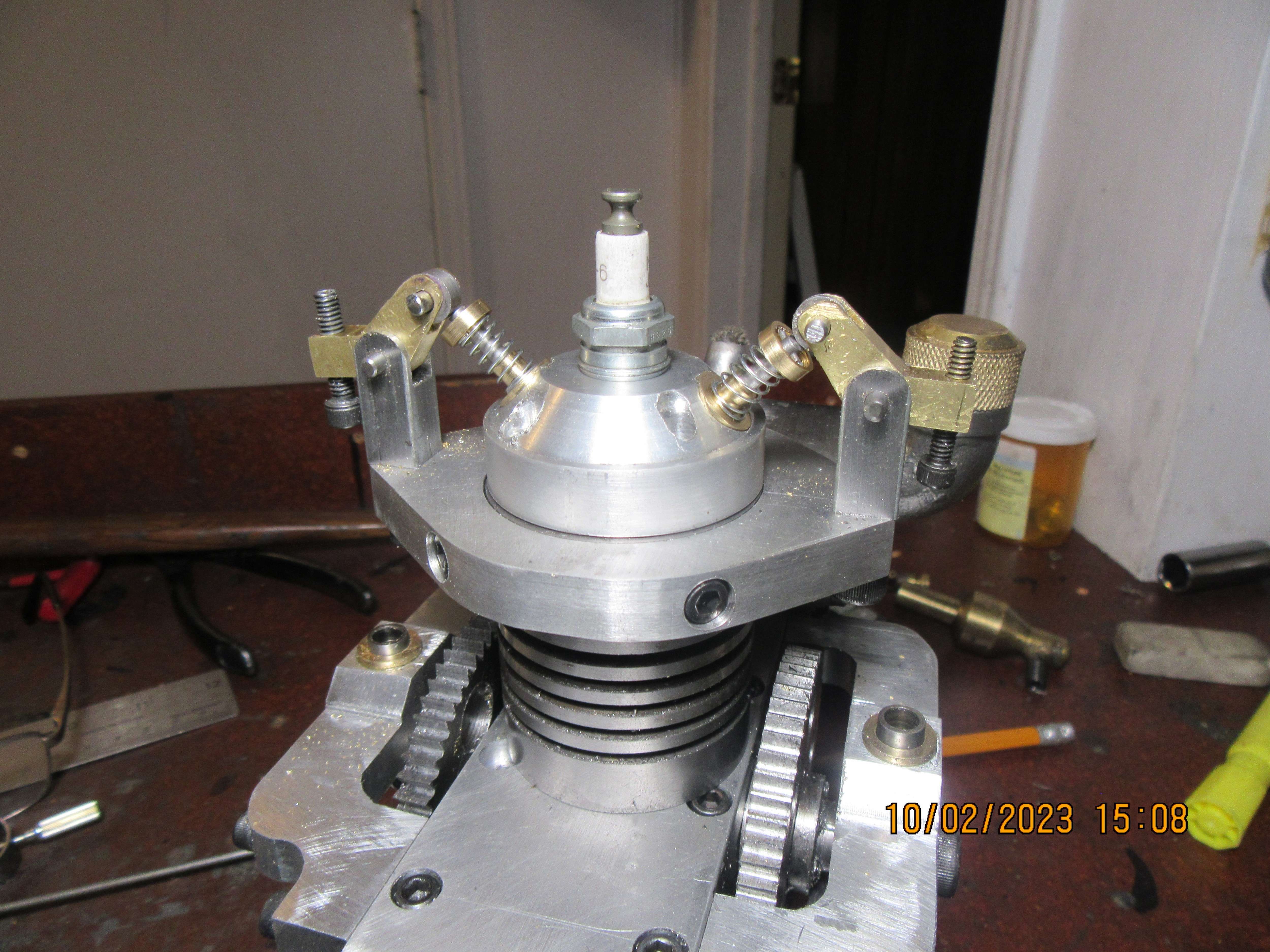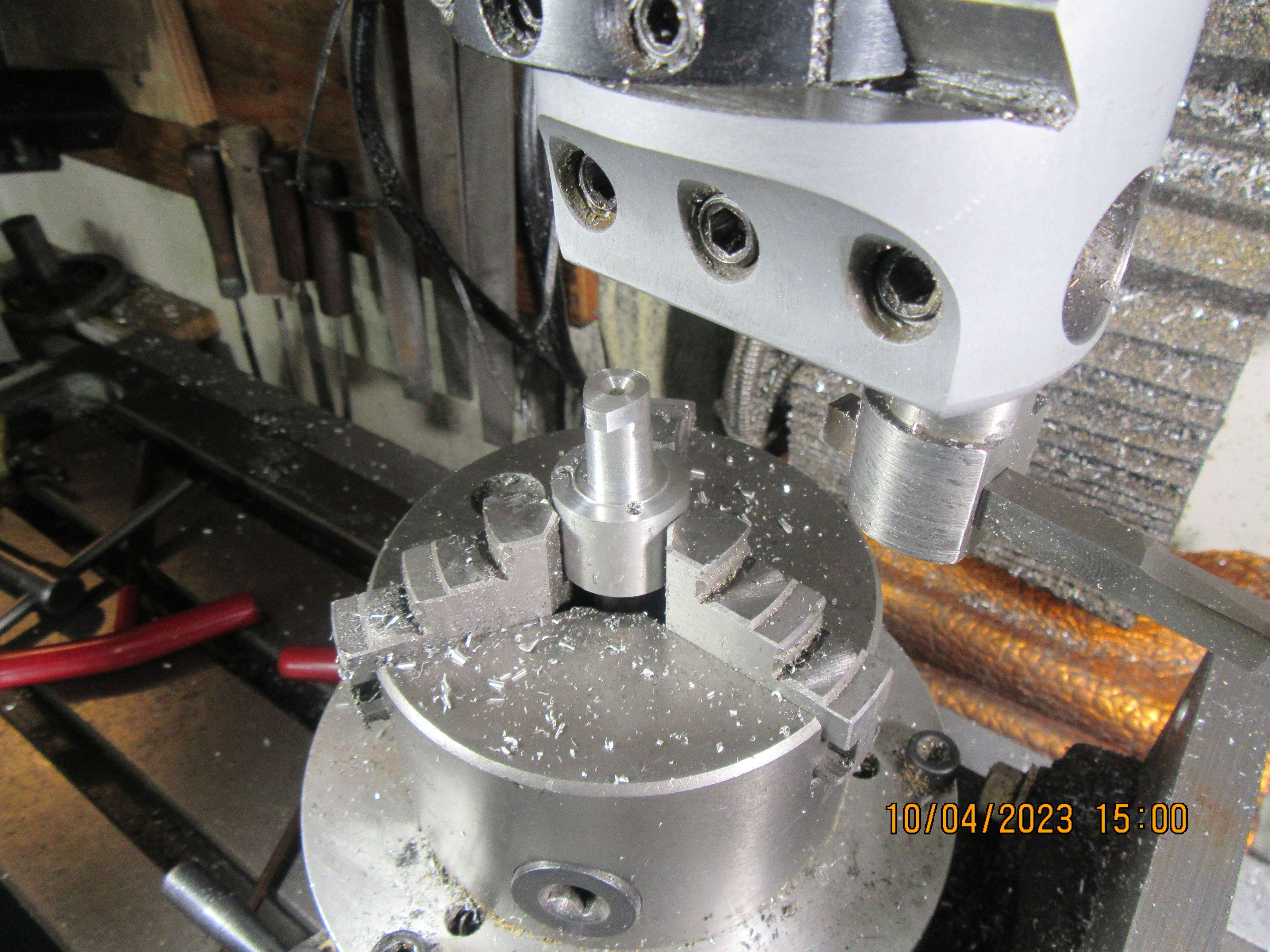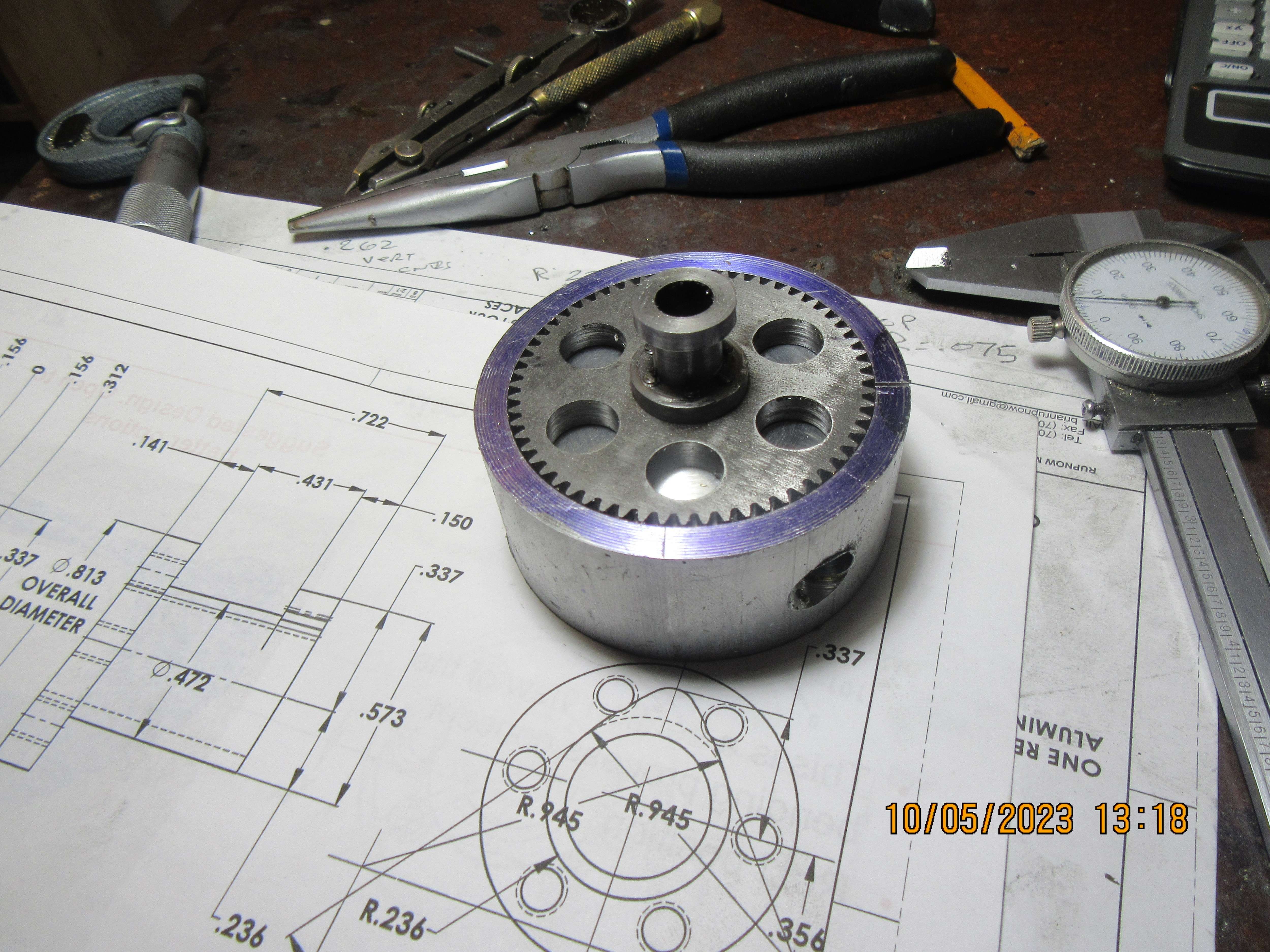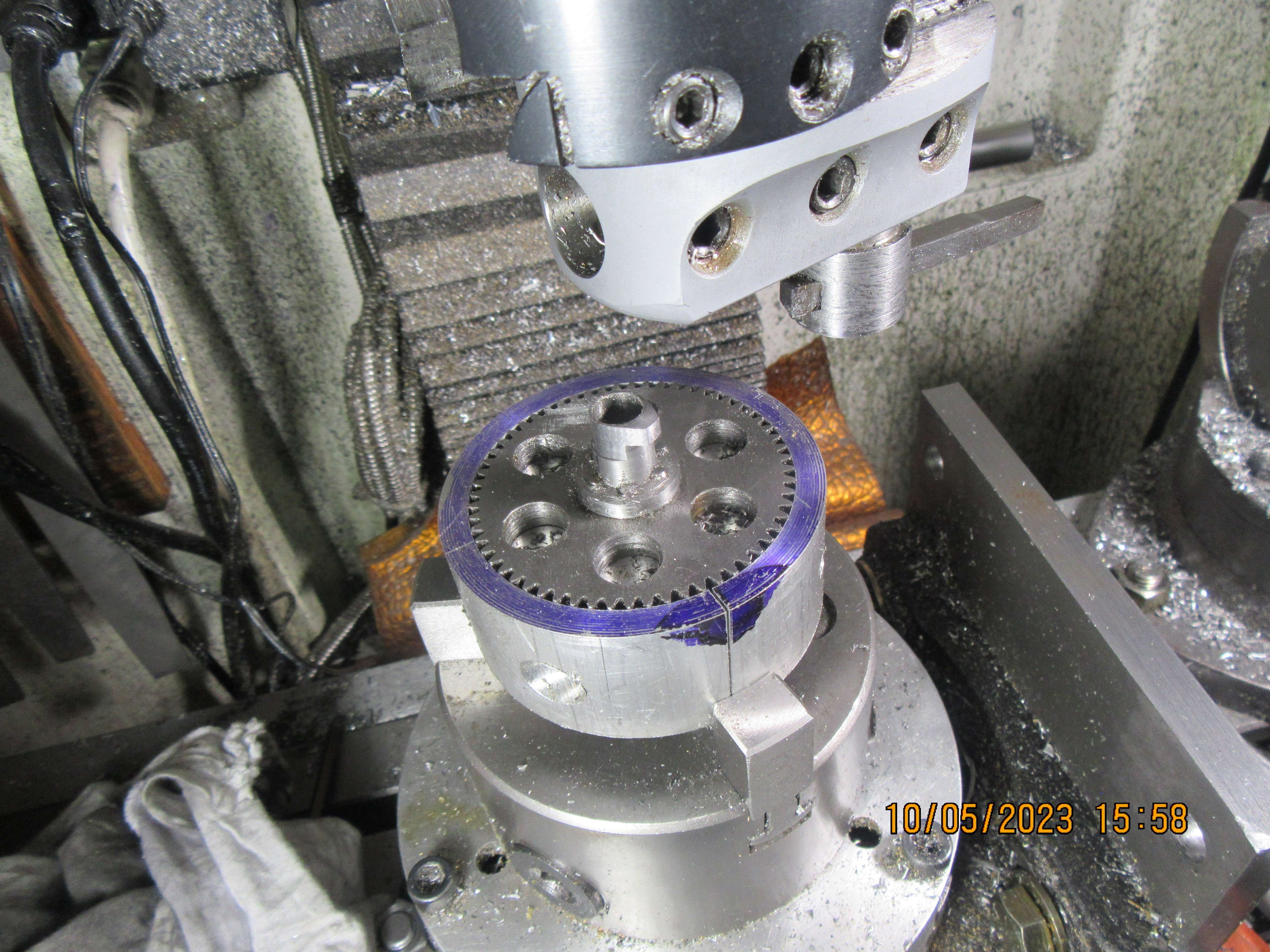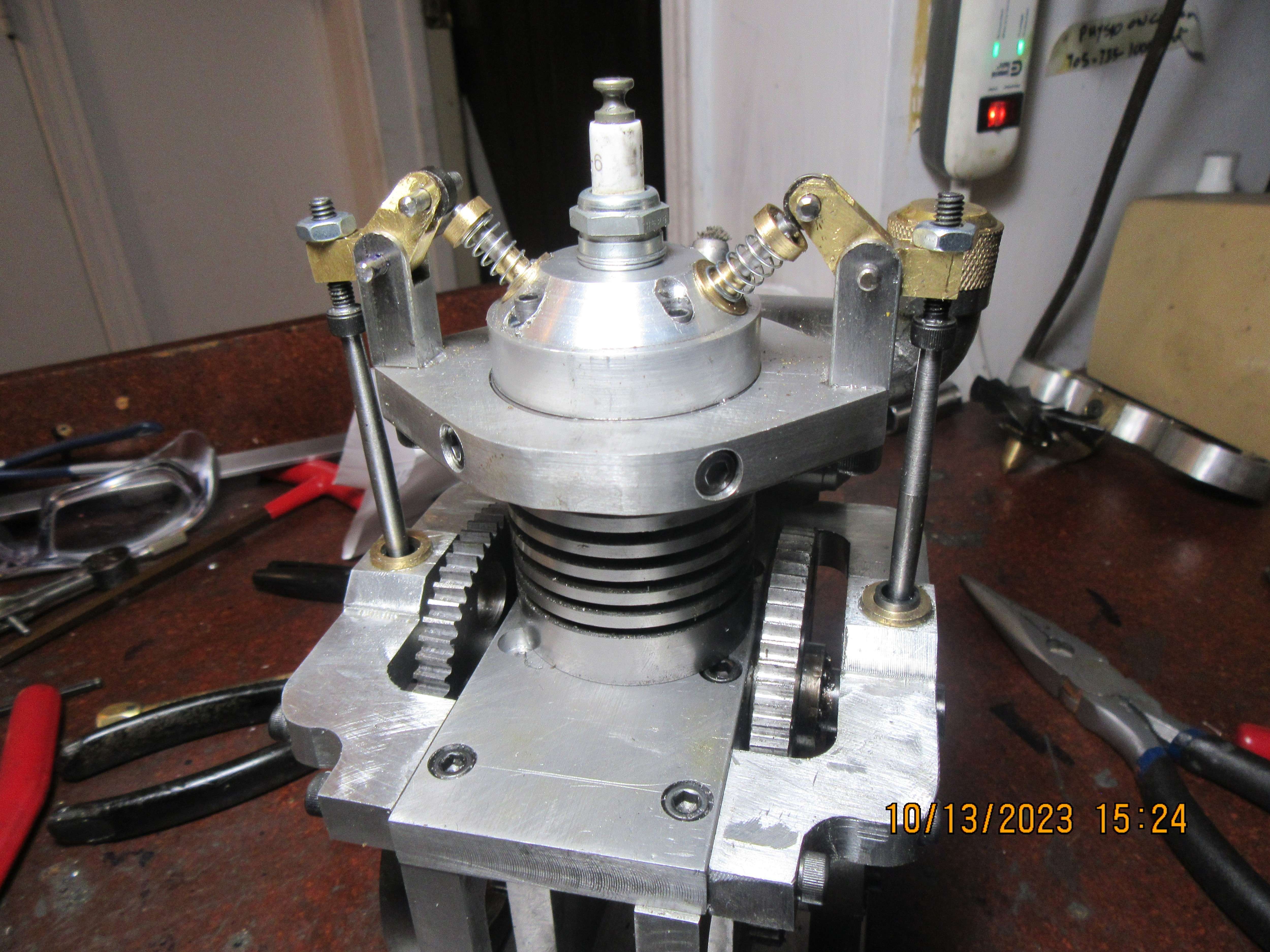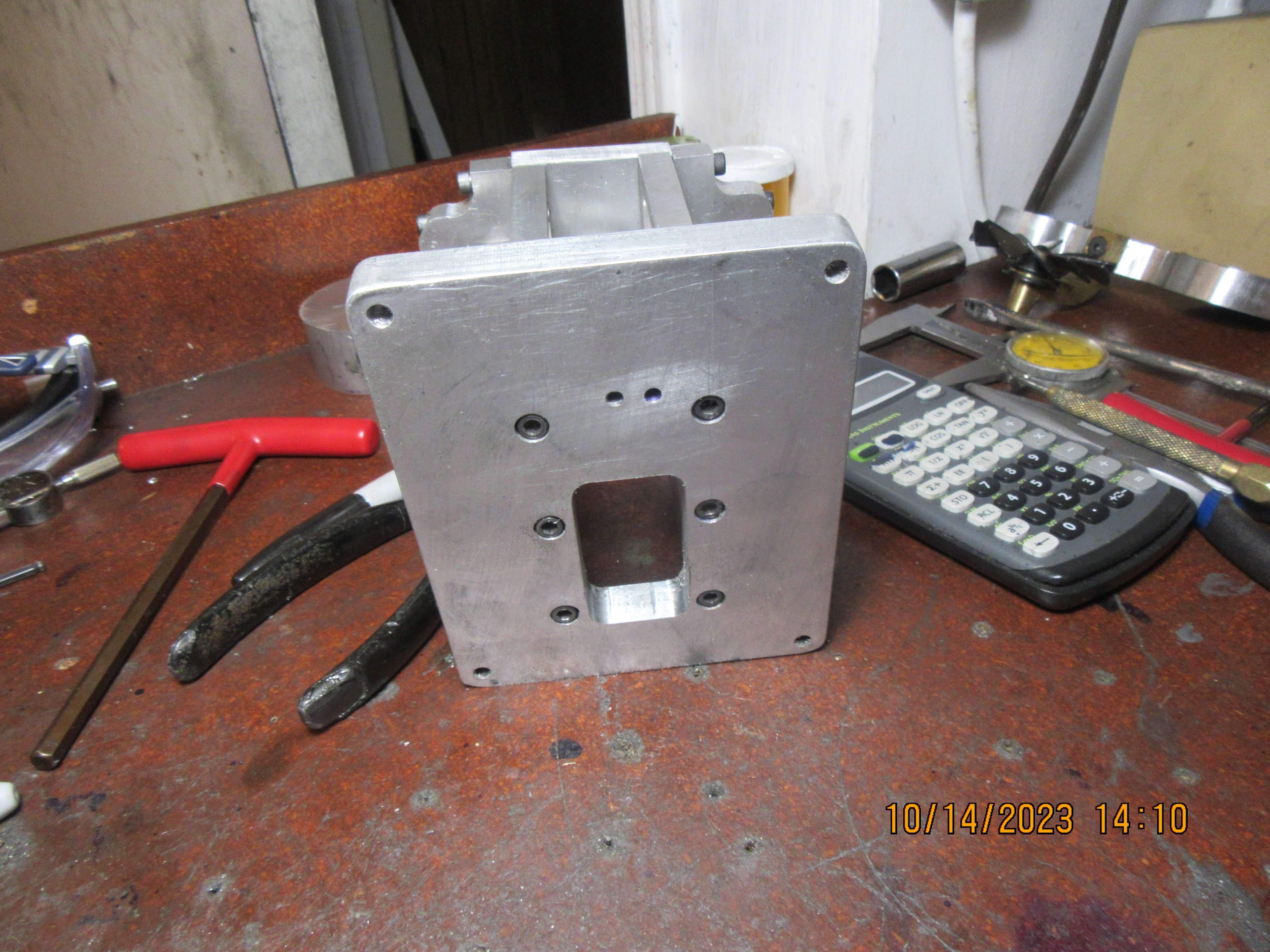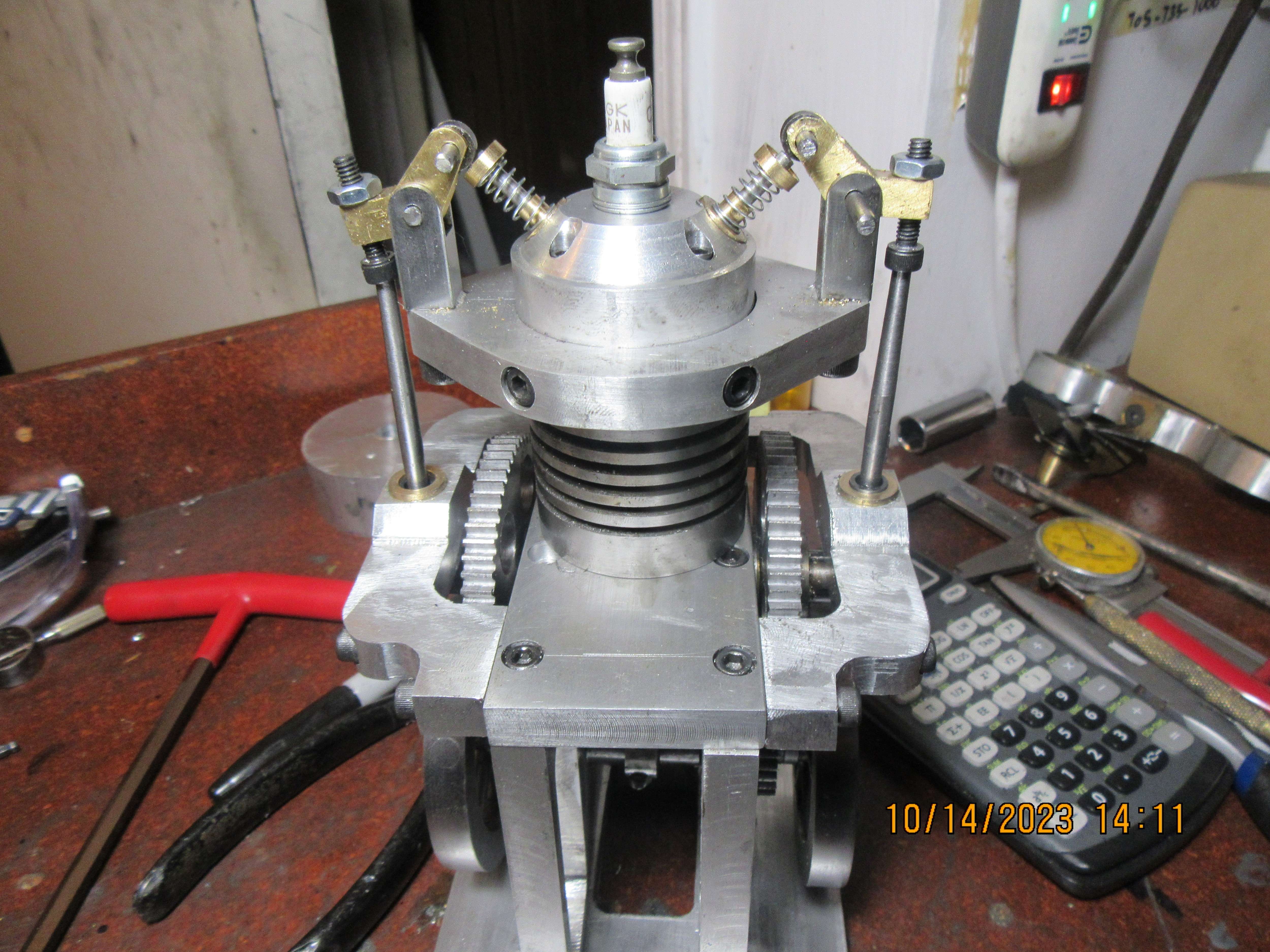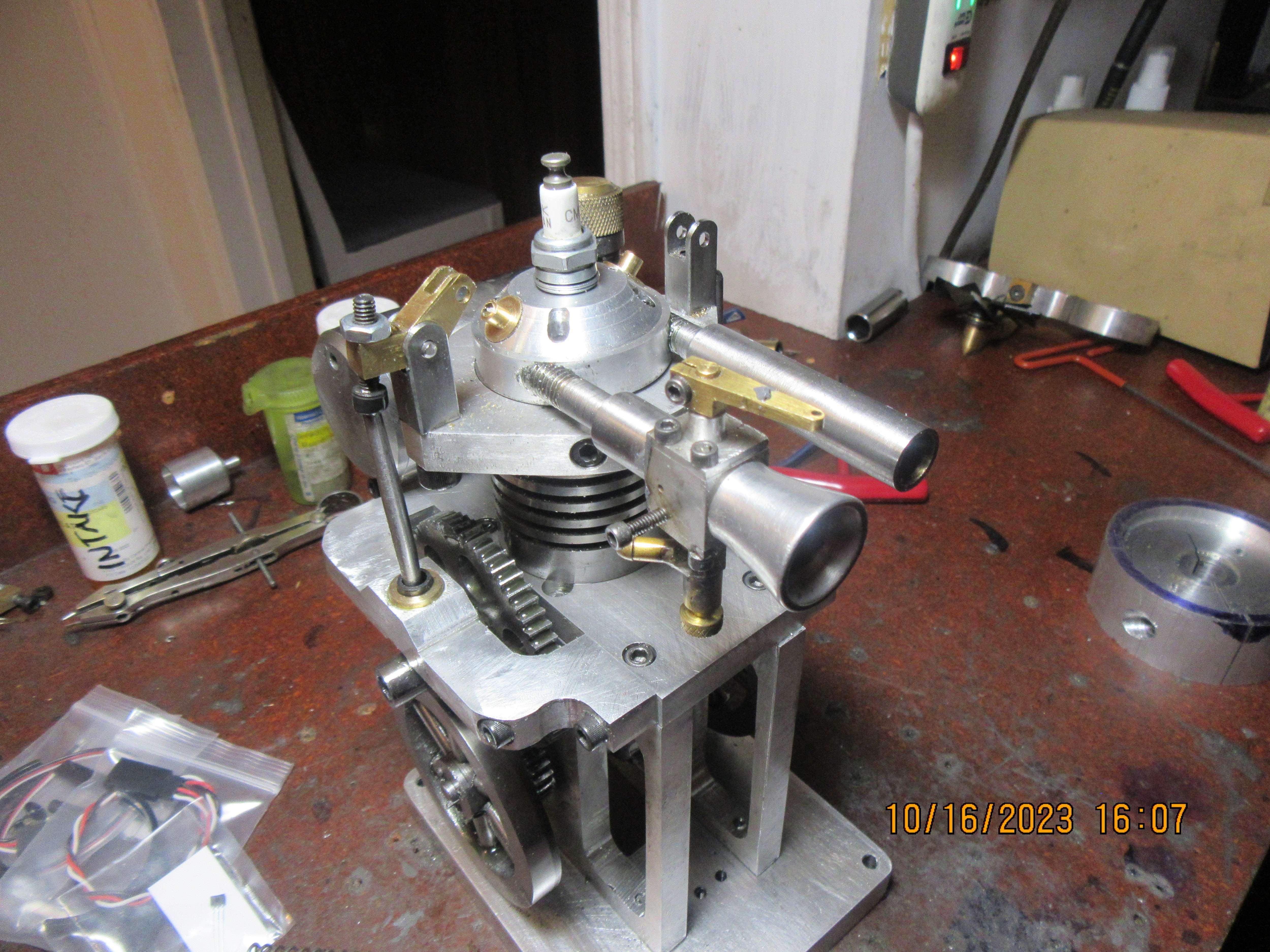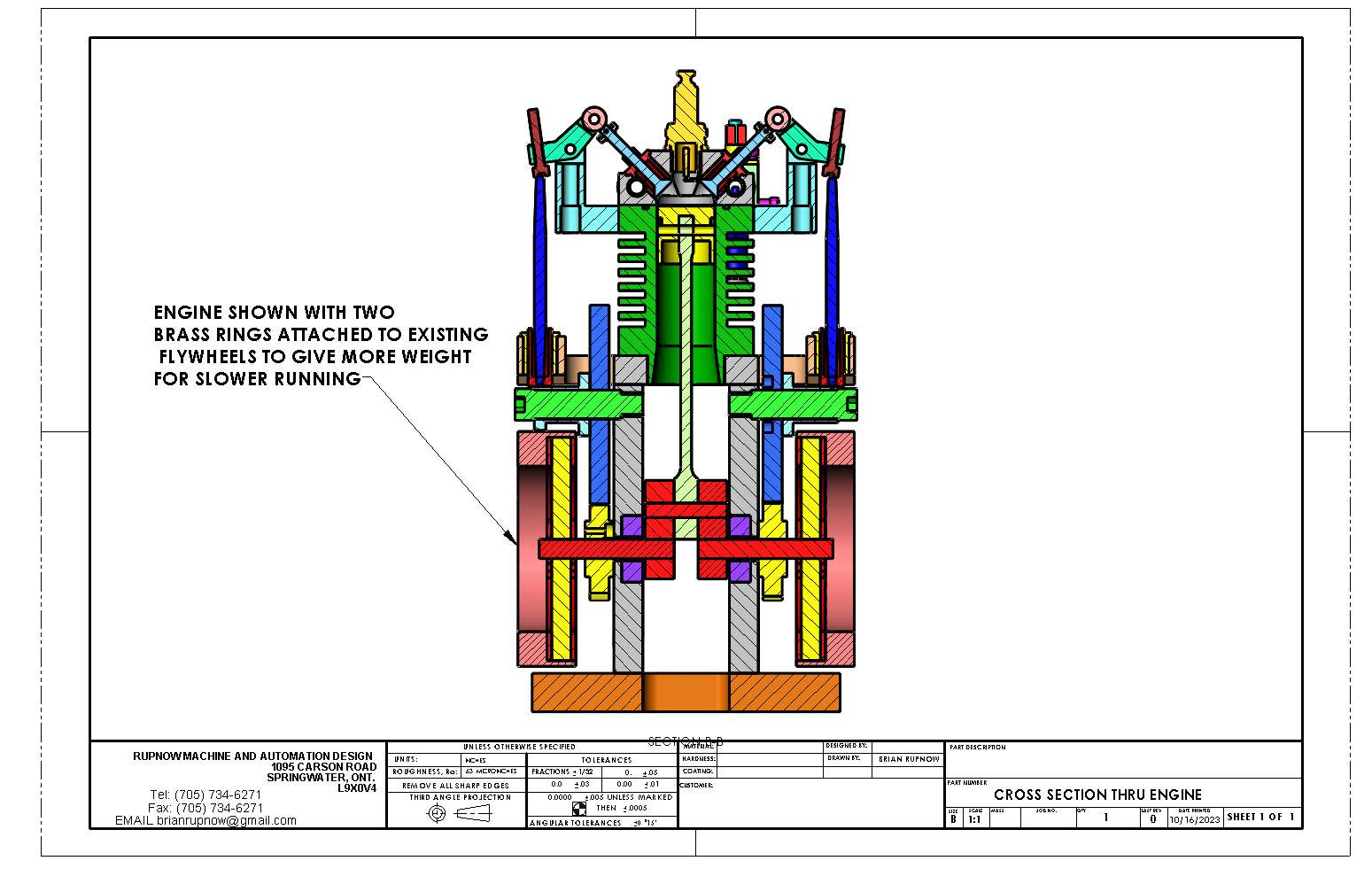I've been feeling a bit off this past week, but today I hardened all of my 01 steel parts---the rollers on the end of the rocker arms, the tappets, and the cams. I didn't get much measurable distortion, as all the parts went back together okay. I'm still waiting for some electronic parts from Roy Sholl--He had shipped them out to me but something got screwed up at the border and they shipped them back to him. He has sent them out again and I expect them later this week or early next week. tomorrow I will make the pushrods and maybe groove the existing piston for one Viton O-ring.
